Robert Henke
| Robert Henke | |
|---|---|
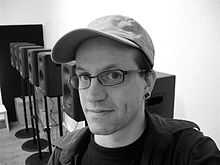 Robert Henke | |
| Background information | |
| Also known as | Monolake |
| Origin | Berlin, Germany |
| Genres | Electronic music |
| Years active | 1995–present |
| Labels | Imbalance Computer Music |
| Website | www.monolake.de |
Robert B. Henke (born 1969) is a German computer music composer and professor of sound design at the Berlin University of the Arts. He is a co-developer of Ableton Live music software and founding member of the electronic music project Monolake. He works and lives in Berlin.

Musical works
Influences

Robert Henke's music combines aspects of electronic dance music (EDM) and so called intelligent dance music (IDM) with features that are often associated with research based computer music. Robert Henke studied computer science at the Technical University of Berlin and film sound engineering at the 'Hochschule für Film und Fernsehen' in Potsdam-Babelsberg. In 1995 he founded the project 'Monolake' together with Gerhard Behles, who is now the CEO of Ableton. Henke's interest in performance of computer based music had a significant influence in the development of Ableton's Live software. He also built several hardware controllers for his personal use as a performer, most notable the 'Monodeck II'. An important component of his live work is sound spatialization using real or virtual spaces. In live performance contexts Henke has used multi-channel audio techniques such as Ambisonics and Wave Field Synthesis. In such settings he has also used multiple video projections to try and achieve a high degree of immersion. Henke also developed the software for series of audiovisual network performances called Atlantic Waves. Since 2009 Robert Henke is teaching sound design at the Sound Studies department of the Berlin University of Arts. His music is released on his own label imbalance computer music.
Solo works
Robert Henke's first release, Piercing Music (1994) is a single 60 minute long drone piece, augmented with transformations of water drops. The work has been derived from a sound installation he did at the Hochschule für Film und Fernsehen in Potsdam in 1993. The concept of transformation is present in all his solo works, most notable in 'Layering Buddha' (2006), which contains a series of compositions derived from loops of the FM3 Buddha Machine, and on "Atom/Document" (2008) where the musical patterns are driving the LEDs of a 3D sculpture of a matrix of 64 helium filled balloons. In his composition "Studies for Thunder" (2004) he uses iterative and stochastic processes in order to create an artificial thunderstorm, transforming a single burst of noise into a complex succession of diffuse reflections that form a hyper-realistic sonic environment. Most of his more recent works are multichannel pieces that are not released on physical carriers or as files, but can only be experienced in a concert situation. These works include performances for Wave Field Synthesis systems and for the INA/GRM acousmonium.
Monolake
Monolake is a collaborative project, founded in 1995 by Robert Henke and Gerhard Behles, who stopped being an active member in 1999 due to his involvement with Ableton. Monolake became a solo project of Robert Henke, with occasional support by Torsten Pröfrock / T++, most notable for the CD release Polygon Cities (2006). As a studio project Monolake is defined as an "'open project'", led by Robert Henke but potentially open for other collaborators as well. Since 2009 Monolake Live performances have a visual component created by Dutch artist Tarik Barri.
Performances
Concept
In his article "Live Performance in the Age of Supercomputers" Henke describes multiple issues of computer based music performance. Robert Henke performs a variety of different works, each with a different focus and angle on the nature of performance.
Monolake Live

In the 1990 Gerhard Behles and Robert Henke developed a Max based sequencer application called 'PX-18', which allowed them to perform improvised, pattern based electronic dance music concerts. The basic concept for the Monolake performances since then is the ability to switch between different states or patterns in real-time and adding expression by altering the sound those patterns trigger or contain. The concept later became popular as 'Session View' in their Ableton Live music software. In order to be able to gain more haptic control and more intuitive access to structure and sound, Henke started building MIDI controllers (Monodeck, Monodeck II) and explores the possibilities of touch surfaces (iPad) for musical interaction. Since early 2009 Monolake Live performances explore surround sound and also include a visual component by Dutch artist Tarik Barri. During the concerts, Barri is navigating in realtime through an imaginary 3D landscape using his own software, 'Versum'. In 2010 Henke and Barri were granted a residency at EMPAC, Troy to develop a Monolake Live performance with 24 audio channels in a dome arrangement, paired with six channels of video.
Other Multichannel Works
Robert Henke performs multichannel versions of some of his released works and dedicated multichannel works, which are not released and only exist in concert versions. In contrast to his Monolake concerts, these events are usually happening in darkness, with a seated audience, and the performer located in the center. Notable works are multichannel versions of 'Studies for Thunder', created 2005 at the Electronic Studio of the Berlin Technical University, 'Layering Buddha', and Tau (2011), which exists in a version for the INA/GRM acousmonium and in a version for the large wave field synthesis array at the Berlin Technical University.
Atom
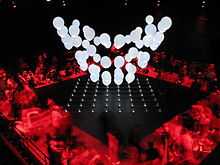
Atom is a collaboration between Christopher Bauder and Robert Henke. Bauder developed a matrix of 64 helium balloons which can be adjusted dynamically in height using computer controlled winches. Each balloon contains a white LED. During the Atom performance, Bauder morphs through several arrangements of the balloons and shapes a temporary sculpture, whilst Henke controls the brightness of the LEDs synchronized with musical events. The connection with the sound is very rigid, resulting in a synaesthetic experience for the audience.
Atlantic Waves
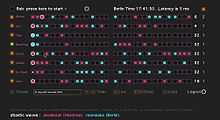
Atlantic Waves is a graphical step sequencer application based on a Max patch, created in 2002 as a tool for a specific improvised concert between Robert Henke in Berlin and Scott Montieth "(Deadbeat)" in Montréal. It allows two users to work on the same pattern in real time whilst being located in different places. The interface has been designed with the aim of being projected during concerts and to act as a graphical score, which allows the audience to follow the typically invisible actions of the performers. Atlantic Waves also contains a built-in chat function, which is also used during the concert as a second channel of interaction between the performers. The projected interface is a mirror of the interface present on the performer's screen, which makes all actions transparent. The Atlantic Waves software has been developed further until 2007. During later performances, a graphical deconstruction process of the interface and the resulting uncertainty in sonic results became an integral part of the performance. A variation of the Atlantic Waves software has also been used for an installation version of Atlantic Waves and a further refined version of it called 'Linear Grid'.
Fundamental Forces
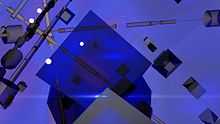
Fundamental Forces is a project originally developed for a performance with the RML Cinechamber in February 2011, a setup of ten video screens surrounding the audience and eight channel audio. Fundamental Forces combines ultra high resolution 3D images created by Tarik Barri and music by Robert Henke to form a narrative abstract movie. In its current (March 2011) state the video has to be pre-rendered to achieve the desired resolution, whilst sound is created and manipulated in real-time during the screening.
Installations
Concept
Apart from playing live concerts, Robert Henke has also realised a number of installations. The interaction between sound and space is a vital parameter in these works.
Atlantic Wave Terminals
Atlantic Wave Terminals is derived from the Atlantic Waves performance application. It consists of an installation with two terminals that allow people to play music together in real time, whilst being far away.
Cyclone
Cyclone is a commissioned work for the Dispatch festival. 8 channels of sound are located in a ring, while the sound generation is driven by a Max patch which is intuitively controlled by a matrix of 16 x 16 buttons with LEDs that is based on a Monome.
Transition Machine
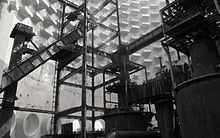
Transition machine is an audiovisual Installation that was commissioned by the Fargfabriken gallery in Stockholm. A multitude of dismantled video displays, computers and loudspeakers are suspended from the ceiling and evoke associations of a mechanical yet organic and seemingly alive organism.
Engineering
Ableton Live
In 1999 Gerhard Behles, Robert Henke, and a number of software developers started working on a new type of music software, called Live. The software became one of the most influential tools for music production and changed the way electronic music is performed and produced. Henke designed the audio effects of the early versions of Live, he wrote the Operator synthesizer and is a member of the general specification team at Ableton. Henke is a driving force behind the integration of Max MSP into Live, called MaxForLive.
Monodeck
The 'Monodeck' was a MIDI controller built 2002 by Robert Henke for his Monolake Live performances, enabling haptic access to several functions of Ableton Live. In 2005-2006, he built a second, extended version the 'Monodeck II'. Monodeck II was never marketed commercially, however some of its concepts have been adopted by Akai in 2010 for their Live controller 'APC-40'.
Max for Live
MaxForLive is a version of the Max programming environment, hosted in Ableton Live. Henke is part of the development team, and released a number of free devices for it, most notable a version of the PX-18 step sequencer and an extensive Granular Synthesizer.
Granulator
The Granulator is a free synthesizer for Max4Live. It serves as a prototpye to show that it is possible to build a serious instrument in Max4Live, but was also developed by Robert Henke because of a personal interest in this specific kind of synthesis.
Teaching and writing
Professor for Sound Design at the Berlin University of the Arts
Since 2009, Robert Henke is a permanent guest lecturer and Professor for sound design at the Sound Studies department of the University of Arts in Berlin.
Lectures
Robert Henke regularly lectures about music production, interface design, Ableton Live and composition of computer music in selected universities and conferences.
Writings
Robert Henke has published a number of articles and interviews on subjects related to computer music and live performance, most notably on live performance in the age of super computing,[1][2] mastering[3] and using the computer for composing.[4]
Selected Albums
- Robert Henke - Piercing Music (1994)
- Monolake - Honkong (1997)
- Monolake - Interstate (1998)
- Monolake - Gravity (2000)
- Monolake - Momentum (2003)
- Robert Henke - Signal To Noise (2004)
- Monolake - Polygon Cities (2005)
- Robert Henke - Layering Buddha (2006)
- Monolake - Silence (2009)
- Monolake - Ghosts (2012)
Selected Performances
References
- ↑ Robert Henke (2007). "Live performance in the age of super computing".
- ↑ Robert Henke (2009). "Live performance in the age of super computing II: the hitchhikers guide thru the performance galaxy".
- ↑ Robert Henke, Rashad Becker (2008). "Mastering".
- ↑ Robert Henke (January 2011). "Tod durch Überfluss: Strategien zur Komposition elektronischer Musik". Neue Zeitschrift für Musik.
External links
- Monolake (official website)
- Robert Henke at the Berlin University of the Arts
- Label (Imbalance Computer Music)
- Discography